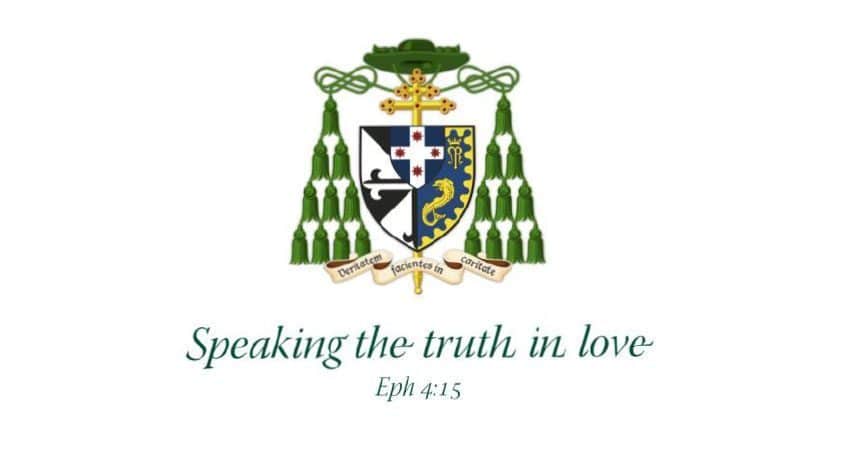HOMILY FOR 2ND SUNDAY EASTERTIDE (DIVINE MERCY SUNDAY) YEAR A – ST. MARY’S CATHEDRAL, SYDNEY

HOMILY FOR 2ND SUNDAY EASTERTIDE (DIVINE MERCY SUNDAY) YEAR A
ST. MARY’S CATHEDRAL, SYDNEY
Poor St Thomas. He gets a bad rap, even from his brother-apostle John in our Gospel today (Jn 20:19-31). He’s been dubbed ‘Doubting Thomas’ ever since, pilloried for his lack of faith, his failure to accept the testimony of his friends. The impression given is that while the rest of the apostles were men of great faith, Tom was the odd one out. The truth, however, is not so simple…
The first point I’d make in Thomas’ defence is that the other apostles were every bit as hardhearted and boneheaded when it came to Jesus’ predictions before He died that He would rise from the dead or the Maries’ testimony that He had indeed risen.
Secondly, if Thomas is to be blamed for insisting that “seeing is believing”, the other guys were just as guilty of refusing to believe until they’d seen the Lord for themselves. When they first told Thomas that Jesus had risen, they didn’t say “We’ve heard the Lord is around”; no, they told him “We’ve seen the Lord”, seen him with our own eyes, and that’s why we believe. And when Thomas sees, he believes and utters on their behalf and ours the great creed and prayer, ‘My Lord and my God’.
Thirdly, our Gospel today tells us that the apostles were hiding in a locked room “for fear of the Jews”. Thomas, on the other hand, was out and about, not half so intent on hiding his allegiance to Jesus as the others were. Perhaps he had more courage than his companions, and faith in Jesus’ power to defeat persecution and death.
Fourthly, and most importantly, having Christian faith is not the same as being gullible. If people tell you they’ve seen a ghost, you shouldn’t just accept their word for it. God gave us intelligence so we would test everything, and not just believe the latest rumour or most fashionable opinion (1Thess 5:21; Eph 4:14). When Our Lady was given the news that she would conceive the Son of God, her immediate response was not to say “Wow, sure thing, you beaut”; no, her immediate response was to interrogate the angel about how this could be, given that she was a Virgin. Thomas is rightly wary about group hysteria and wishful thinking, and so he asks for some evidence.
So why does the Lord humiliate Thomas by inviting him to put his fingers and hands into His wounds? For this reason, perhaps: while many of the Jews believed in the Resurrection of the Just, the Pharisees amongst them, it was not clear that this meant literal resurrection in some corporeal form. There were liberal theologians and Fairfax commentators, then as now, ready to say that resurrection is really about someone living on in our hearts, or in their achievements, but not about anything so crass as “rising in the flesh”. What Jesus is doing today, it seems, in inviting Thomas’ touch, is insisting that He really did rise, not as a ghost, nor as wishful thinking, nor as an inspiring idea, but literally in the body, and it was the fingers of doubters ever since, including doubting modernity, that He was inviting into His hands and side.
So let’s be clear about this: Christian faith is faith that Christ rose from the dead in the body; the same Christ who walked in Galilee and was crucified and died in Jerusalem, later met His disciples again in Jerusalem and cooked breakfast again for them in Galilee. And He did so, not as some kind of magic trick or to show off how powerful He was, but so we might have confidence that we too will transcend the grave, that we too will be raised up. Now, for such as us to rise less than bodily would be an impoverishment, indeed vandalism, and God is no vandal. If it is to be truly us who are raised, us who will live-after, we must rise in our bodies. Life beyond the grave could only be a truly blessed life for us if we are to be all we properly are now and more, not less. Through His encounter with Thomas, Jesus shows us that that is exactly what He has won for us.
Next comes Jesus’ last beatitude. He’s already taught us that blessed are the poor and poor-in-spirit, the meek and mournful, the hungry and those who feed them, the thirsty for justice and those who quench them, the pure and merciful, the persecuted and peacemaker, those unoffended by Him, those who hear the word of God and do it, and those still doing so when He returns (Mt 5:3-11; 11:6; 23:39; 24:6; 25:34f; Lk 6:20-22; 7:23; 11:28; 12:37-43; 13:35). Jesus also beatified “the eyes that see what you see and the ears that hear what you hear” (Mt 13:16f; Lk 10:23f). Now we hear His last beatitude: “Blessed are those who have not seen and yet believe” (Jn 20:29). Faith, it seems, goes beyond what can be known with sensory perception and reason alone; it opens the eyes of the mind to something greater (CCC 153).
In the 1994 Christmas comedy film, The Santa Clause, Scott Calvin (played by Tim Allen) is an ordinary man who accidentally injures Santa on Christmas Eve. To make amends he is required to go to the North Pole, see the elves at work, and take on the Santa’s mantle for that year. When he encounters a polar bear directing traffic, he declares, “I see it, but I don’t believe it.” To which his young elven guide responds, “Seeing isn’t believing: believing is seeing.” The point is: Scott has so many pre-conceptions about how the world is or should be that he can’t believe what’s before him. He’s like Pilate in that, or the Pharisees, or Thomas. Seeing isn’t enough for him to understand; he needs to believe in order to see the truth. Sometimes a leap of faith is required in order to see what is right in front of us.
Our Easter leap of faith is this: that one man has come back, not as a projection of the faith of His disciples, for He came when none of them had the least idea of such a possibility and all of them had a strong disinclination to believe it.
One man has come back, not as a ghostly phenomenon, a spiritual experience, a happy memory, but in flesh and blood.
One man has come back, and while we do not see Him yet with our eyes, we do with our hearts, and we shall indeed see Him face-to-face when we are at last filled with joy by the Divine Mercy (1 Pet 1:3-9). Easter Church of Sydney, 175 years young: Believe that you might see!
INTRODUCTION FOR 2ND SUNDAY EASTERTIDE (DIVINE MERCY SUNDAY) YEAR A
ST. MARY’S CATHEDRAL, SYDNEY
Welcome to St Mary’s Cathedral for the Solemn Mass for the second Sunday of Easter, ‘Low’ or ‘Divine Mercy’ Sunday. Yesterday was the 175th anniversary of the elevation of the diocese of Sydney to an Archdiocese and so of the first Bishop, John Bede Polding, to an Archbishop: I think the Archdiocese is not doing too badly for a 175-year-old lady! To everyone present for these birthday and Easter celebrations, both visitors and more regulars, a very warm welcome!

